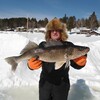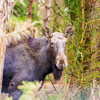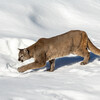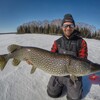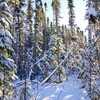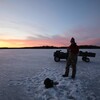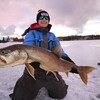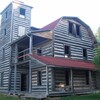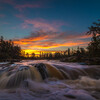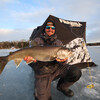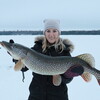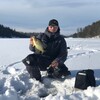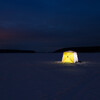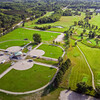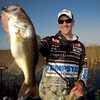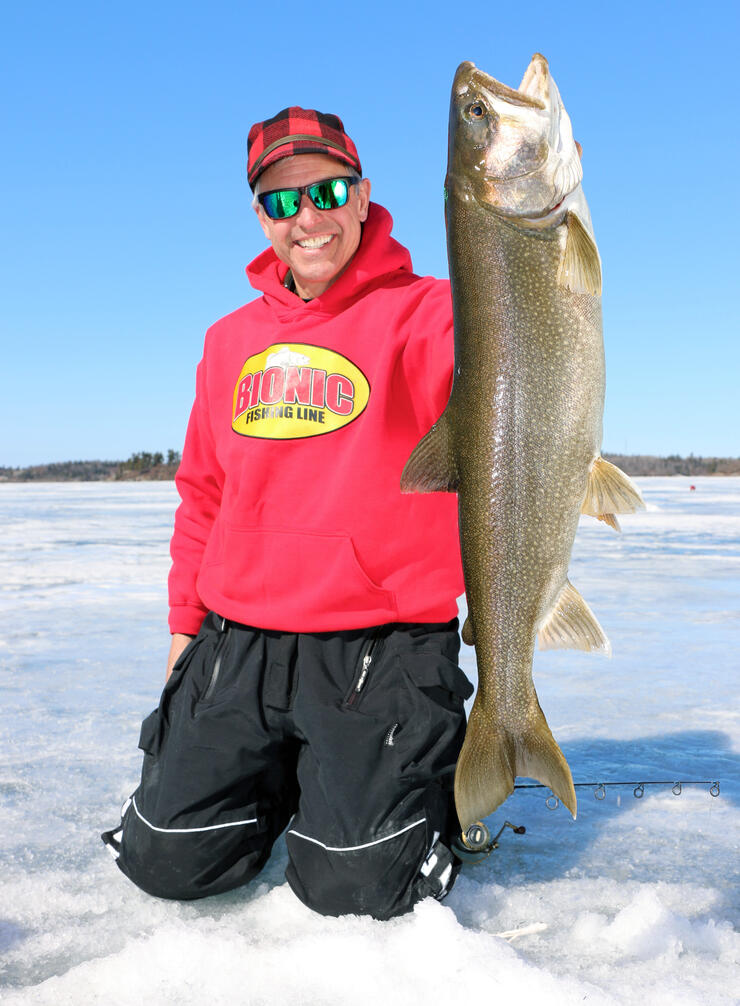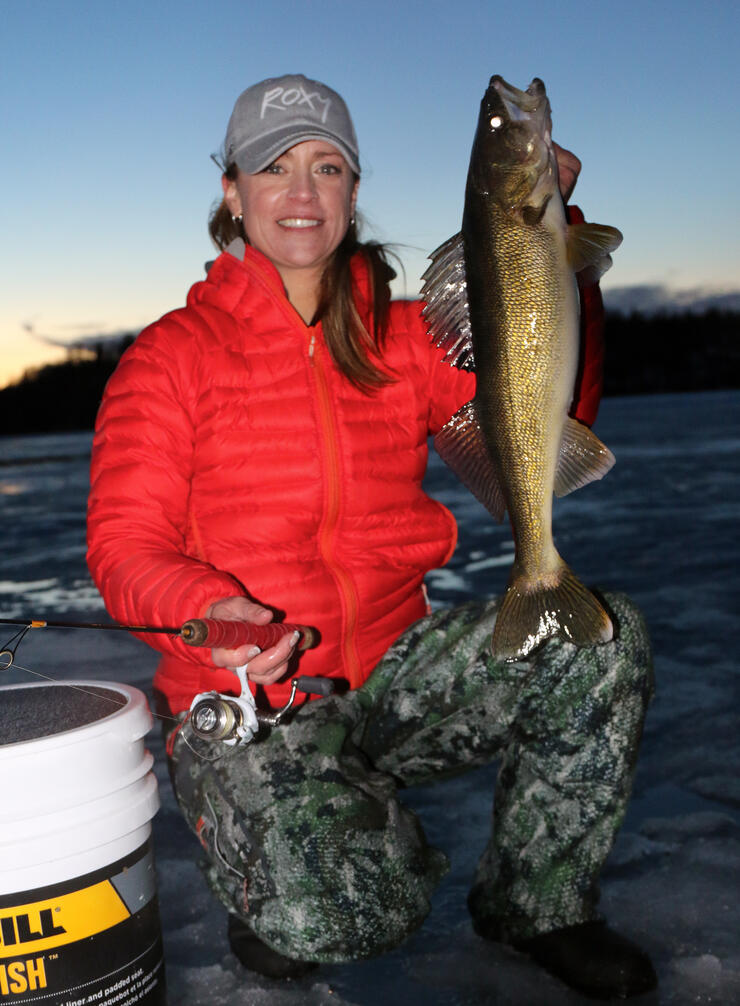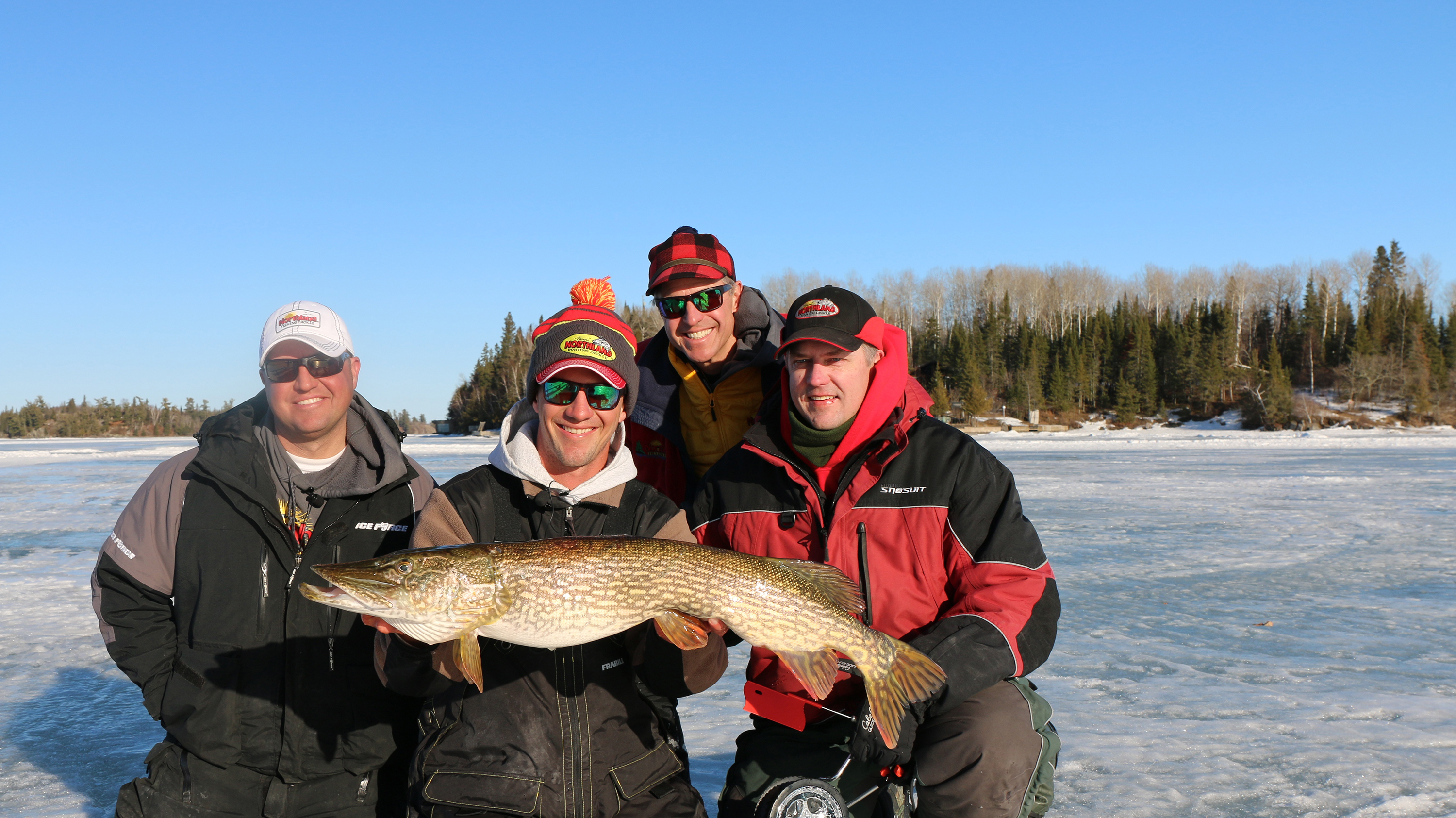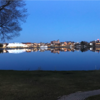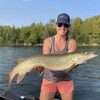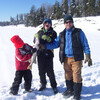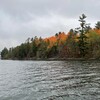Late Season Ice Fishing
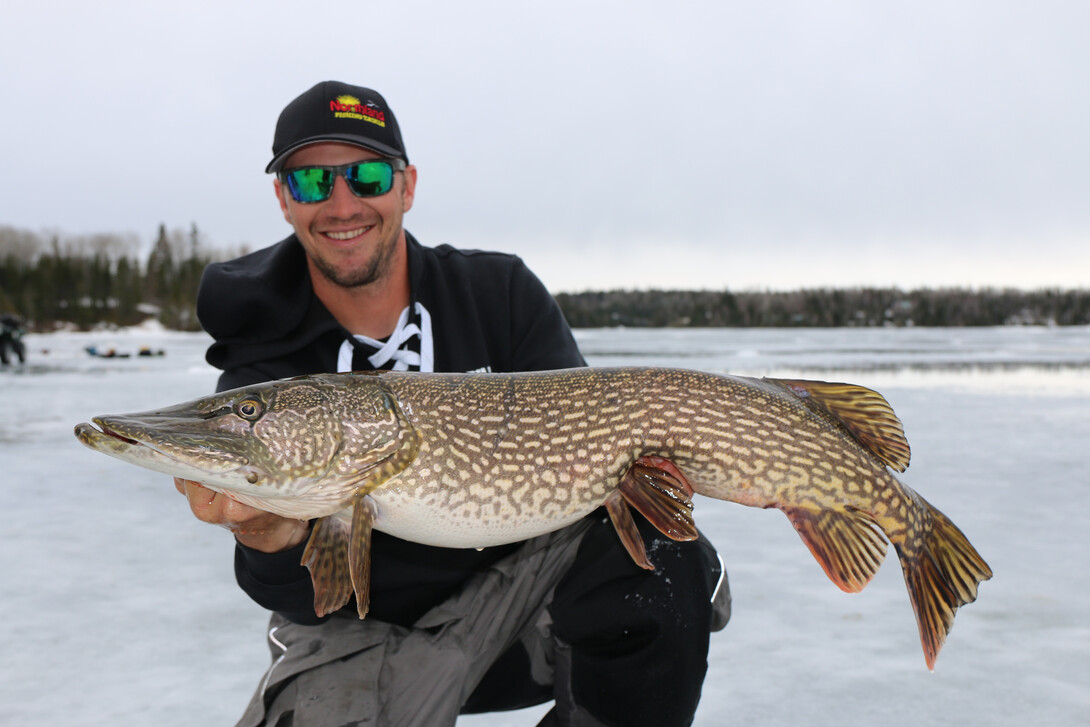
Fishing near Winter's End
As we roll through another winter here in Northwest Ontario’s Sunset Country Region, I try to get out fishing here and there when I can. We have quite a bit of snow on the ground right now so traveling around too extensively is a bit of a workout, even on a snowmobile. Add some cold temperatures and short days, and fishing is not nearly as appealing as it is later in March when the temperatures improve, the snow melts, and the days get longer.
My trips right now are usually heading out in the afternoon to catch a few walleye and crappie for dinner. My fishing tournament schedule, fishing the Walmart FLW Tour, has me on the road quite a bit in the winter to the southern U.S., but I am really excited that this year I will be home for the last two weeks in March, which is in my opinion, a prime time to ice fish.
Over the past decade, I have spent as much time on the ice during this period. I invite good friends to visit from all over and have been fortunate to catch some of the largest pike, lake trout, and walleye that I have ever had my hands on. It's a great time of the year to film videos and take pictures as well, because it is usually warm, so the fish don't freeze and all of our equipment works properly.
Monster Pike Time
Northern Pike spawn immediately after the ice goes out, so late in each ice season, these fish make a predictable migration to the shallow, weedy bays where all the action goes down. Until the ice actually melts, most of these fish hang around the first drop off where the shallow water starts to taper off. The mouths of bays and rivers are high-end spots.
The absolute best way to catch a big pike is with a large dead cisco (or herring) fished on a quick-strike rig, below a tip-up. My friends and I have experimented for years, and I can count the number of big pike on one hand that I have seen get caught actually jigging a bait as we do for lake trout and walleye. You will catch fish, but the true giants, the 15-20 pound plus fish, really like the real deal. Dead baits always work better than live baits as well. I’m not going to try to explain it, but we have tried and tried with live ciscos that we catch, and while they have been hit before, the dead baits are always best.
Most of the holes I fish are from 8-20 feet, and I like to set my bait about a foot or so off the bottom.
We have countless awesome bodies of water with monster pike, so if you want to catch one, that is how you do it!
Lunker Lake Trout
As a fish that prefers cold water, lake trout are active throughout the winter, but March is the best time to target and catch them. One reason is that it is a lot easier for anglers to move around from spot to spot and cover water once the snow has shrunk up or melted. Trout lakes are notorious for having a lot of slush, and that is an issue in most waters right now. Come March, the ice is thick and the slush is gone.
I think that once the light starts penetrating the ice as the snow dissipates, these fish have an easier time seeing and finding our lures as well because the dark deep water is lit up a little more.
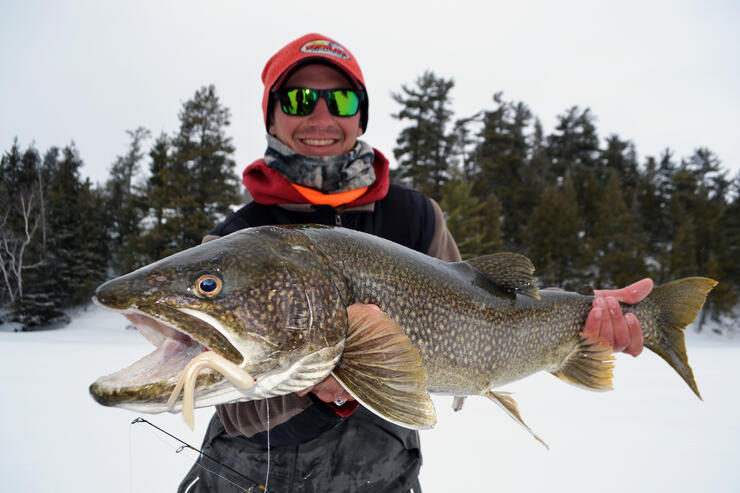
All I know is, March is a great time to hit the ice in pursuit of trout. My bait selection is pretty simple – I usually rely on the classic white tube jig, which has put thousands of lake trout on the ice over the years. Mix in jigging spoons, lipless rattle baits, or other soft plastic minnow imitators, and let the fish tell you what they want.
As for as location, it’s all about moving around to find the fish. Sometimes points with sharp ledges are good, bluff walls can be good, and the mouths of shallow bays can be good – trout like to feed on perch in these places and they are often overlooked.
If you want to catch a big lake trout, focus your efforts on the bigger bodies of water across the region. For more action, the smaller inland lakes have big numbers of fish, but you won’t see trout grow as large.
Wicked Walleye Fishing
Much like pike, walleye spawn shortly after the ice melts in the spring, so they tend to show up in predictable locations late in the ice season as well. Walleyes in NW Ontario will spawn in creeks and rivers if they are available, but in some waters where moving water is not an option; they’ll simply choose shallow bays and sandy areas to do their thing.
When it comes to selecting good locations, they are fairly obvious on the larger bodies of water. I like to fish on the first drop off coming out of the shallow bays, focusing my efforts in 15-20 feet of water. On Lake of the Woods where I live, this is the prime depth in many of my favourite late winter spots.
On a lot of the smaller inland lakes across the Sunset Country Region, the late ice time frame is when the fishing action really picks up. Many of these waters may be fly-in only during the summer but can be accessed easily with ATV or snowmobile this time of year. Many of these waters are shallow in general, and it is common to pull walleyes out of four or five feet of water in March. For some reason, the fishing in these shallower lakes is usually mediocre or poor early in the winter, but they really heat up late in the season. The evening bite is usually when walleyes get extra fired up and aggressive.
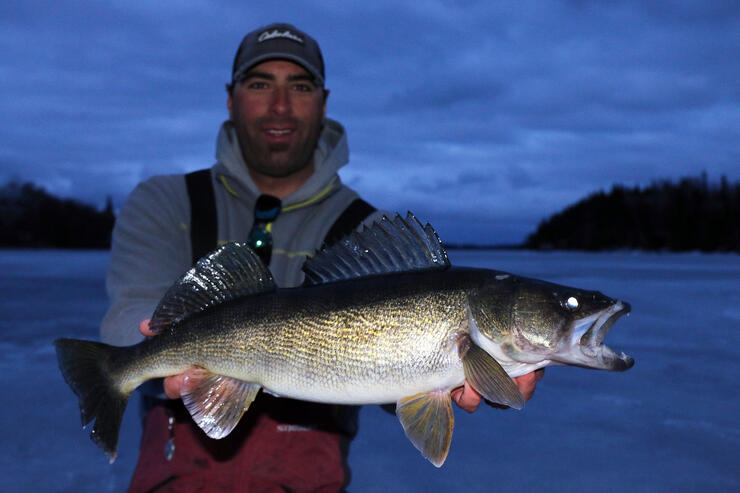
When it comes to tackle, I’m a big fan of jigging spoons tipped with a minnow head, but the local tradition of using a jig and minnow always produces as well. Walleyes are aggressive in general this time of year, so it’s much more important to be around fish than worry about your lure.
Walleyes are big and heavy right now as well because they are about to spawn and because they are eating heavily in preparation for the spawning process so you can expect to catch some big fish, more than any other time of the year.
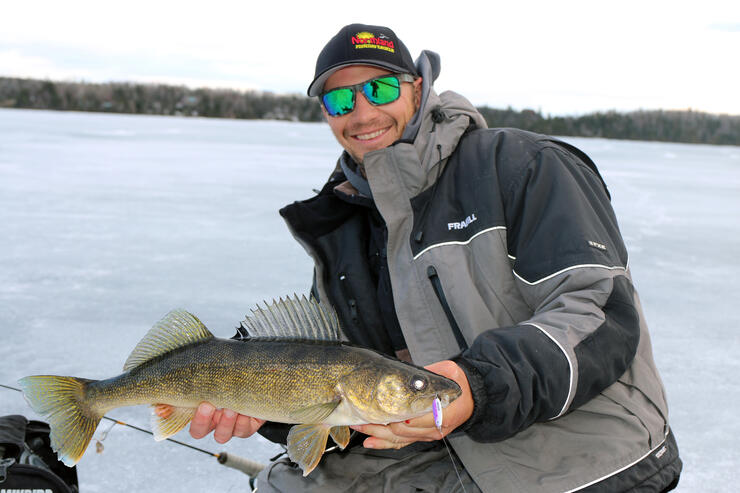
In addition to pike, walleye, and trout, other species, for example, this large whitefish shown below, are easier to catch through the ice so don't overlook the opportunities for other species that are available on the many lakes and rivers in the region. This includes crappie and perch, and even burbot!
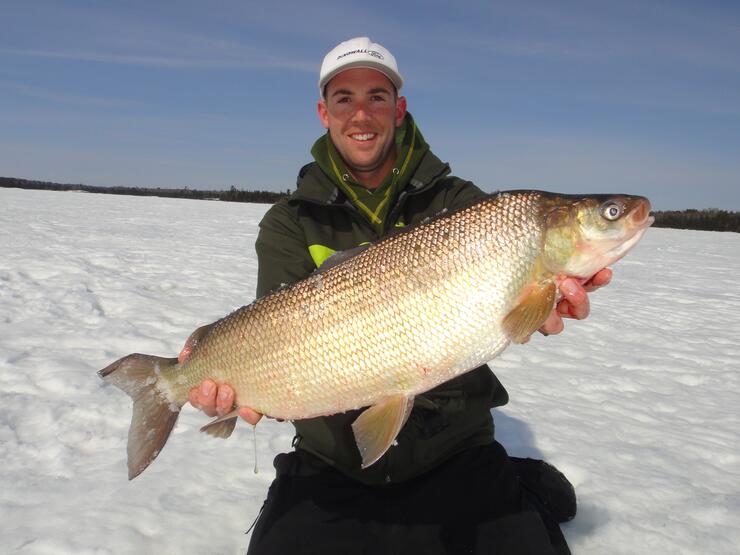
I’m counting down the days until those last two weeks in March, when I’ll be on the ice chasing all of these big fish, enjoying the longer days and the warmer weather. There are several resorts and camps across the region that remain open through the winter to cater to ice anglers. The people at these places can absolutely lead you in the right direction as far as where to fish and keep you updated on the ice conditions.
If you like to ice fish, pack your bags and head to Sunset Country in March to have some fun and catch the biggest fish of your life!
Recommended Articles

Is the 1,400 Kilometre Drive to Northwest Ontario For a Fishing Trip Worth it?
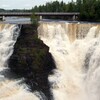
8 must-see waterfalls

6 Ways to Get Your 10,000 Steps This Fall

Top 5 Reasons You Should Be Fishing in Morson, Ontario

Discover The Winnipeg River

Enjoy Sunset Country's Fall Colours on Your Next Road Trip

Fishing in the Fall?

6 Reasons to Book a Fall Vacation to Sunset Country

10 Reasons to Avoid Ontario’s Sunset Country

Heading Across Canada?

A Guide to Sunset Country Museums
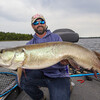
The Promised Land: Best Muskie Fishing in Ontario

Fall Fishing Tips
5 Essential Boreal Experiences in Ontario's Sunset Country

5 Obscure Facts About Northwestern Ontario: Were You Aware of These?
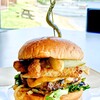
Great Food in Relatively Unknown Places
Outdoor Medicine

A Guide to Bringing Your Pets on Vacation to Canada

There's more than just fishing in the Red Lake Region

5 Amazing Sights You Can Only See By Boat

Going Fishing in Canada?

Going fishing in Ontario?

Outdoor Adventure in Ontario's Northern Paradise
Planning A Family Fishing Trip to Canada

Tips from a Fishing Legend

